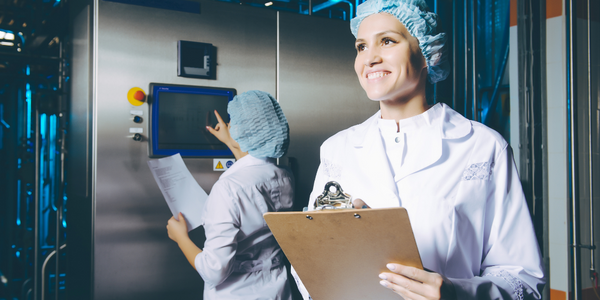下载PDF
3 Ways a W Hotel Chief Engineer Improved his Kitchen Equipment Operations
技术
- 分析与建模 - 预测分析
- 功能应用 - 远程监控系统
- 传感器 - 电导率传感器
适用功能
- 设施管理
- 维护
用例
- 能源管理系统
- 预测性维护
- 远程资产管理
服务
- 系统集成
- 数据科学服务
挑战
Bill DeMartini, Chief Engineer of the W Hotel San Francisco, was searching for a way to identify the unseen problems in his building. He wanted to take energy efficiency beyond his hotel’s LEED Silver certification. To tackle this, he knew he must look at TRACE, the award-winning restaurant. Without a cost-effective way to monitor kitchen operations 24/7, Bill lacked the facts required to optimize his kitchen and improve W Hotel’s efficiency. Bill engaged with Verdigris to deliver the granularity he needed to identify ways to improve the kitchen operations.
关于客户
The W Hotel San Francisco is a luxury hotel with approximately 400 rooms, known for its high standards and commitment to sustainability. The hotel has achieved LEED Silver certification, reflecting its dedication to energy efficiency and environmental responsibility. The hotel features TRACE, an award-winning restaurant that is a significant part of its operations. Bill DeMartini, the Chief Engineer, is responsible for maintaining and improving the hotel's infrastructure, including its commercial kitchen. He sought to enhance the hotel's energy efficiency and operational effectiveness by identifying and addressing unseen problems in the kitchen equipment.
解决方案
Verdigris provided a comprehensive energy monitoring solution that delivered detailed monthly reports on the hotel's kitchen equipment. The system identified inefficiencies and potential equipment failures by analyzing circuit-level electricity consumption. For instance, it uncovered a dishwasher booster heater running overnight, consuming over $5,000 of energy annually. It also detected a faulty circuit in the main dishwasher, which was drawing 60% more energy than the other two phases, indicating a probable equipment fault. This led to the discovery of a broken heating element, which could have caused premature failure of the dishwasher, a $30,000+ piece of equipment. Additionally, Verdigris' high-resolution monitoring revealed small devices left on after hours, such as a pizza oven and refrigerator lights, which collectively used more than $7,000 of electricity each year. Bill was able to address these issues by installing motion sensors and retraining staff procedures.
运营影响
数量效益
相关案例.

Case Study
Remote Monitoring & Predictive Maintenance App for a Solar Energy System
The maintenance & tracking of various modules was an overhead for the customer due to the huge labor costs involved. Being an advanced solar solutions provider, they wanted to ensure early detection of issues and provide the best-in-class customer experience. Hence they wanted to automate the whole process.
.png)
Case Study
Improving Vending Machine Profitability with the Internet of Things (IoT)
The vending industry is undergoing a sea change, taking advantage of new technologies to go beyond just delivering snacks to creating a new retail location. Intelligent vending machines can be found in many public locations as well as company facilities, selling different types of goods and services, including even computer accessories, gold bars, tickets, and office supplies. With increasing sophistication, they may also provide time- and location-based data pertaining to sales, inventory, and customer preferences. But at the end of the day, vending machine operators know greater profitability is driven by higher sales and lower operating costs.

Case Study
Predictive Maintenance for Industrial Chillers
For global leaders in the industrial chiller manufacturing, reliability of the entire production process is of the utmost importance. Chillers are refrigeration systems that produce ice water to provide cooling for a process or industrial application. One of those leaders sought a way to respond to asset performance issues, even before they occur. The intelligence to guarantee maximum reliability of cooling devices is embedded (pre-alarming). A pre-alarming phase means that the cooling device still works, but symptoms may appear, telling manufacturers that a failure is likely to occur in the near future. Chillers who are not internet connected at that moment, provide little insight in this pre-alarming phase.

Case Study
Remote Wellhead Monitoring
Each wellhead was equipped with various sensors and meters that needed to be monitored and controlled from a central HMI, often miles away from the assets in the field. Redundant solar and wind generators were installed at each wellhead to support the electrical needs of the pumpstations, temperature meters, cameras, and cellular modules. In addition to asset management and remote control capabilities, data logging for remote surveillance and alarm notifications was a key demand from the customer. Terra Ferma’s solution needed to be power efficient, reliable, and capable of supporting high-bandwidth data-feeds. They needed a multi-link cellular connection to a central server that sustained reliable and redundant monitoring and control of flow meters, temperature sensors, power supply, and event-logging; including video and image files. This open-standard network needed to interface with the existing SCADA and proprietary network management software.







